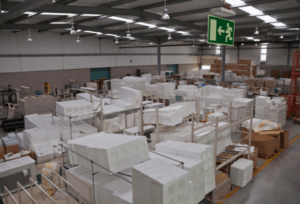Moving to a new home or office is a significant milestone, often brimming with excitement and new beginnings. However, this transition can also bring its share of challenges, particularly when it comes to protecting your belongings during the move. Understanding the essentials of packing materials is crucial for ensuring that your possessions arrive safely and intact. In “Packing Materials 101: How to Protect Your Belongings During a Move,” we will explore effective moving tips and strategies to employ a stress-free moving experience. Whether you are decluttering or hiring a moving company, our guide will provide you with the knowledge and confidence to master your move.

Decluttering Before the Move
Sorting Your Belongings
Before you start packing, take time to sort through your belongings. This process not only reduces the amount you need to move but also helps you create a fresh start in your new space. Begin by categorizing items into three distinct piles: “keep,” “donate,” and “throw out.” The “keep” pile should consist of items you regularly use or hold sentimental value. The “donate” pile is for items in good condition that could benefit others. Finally, the “throw out” pile is for broken or unusable items. This organization strategy simplifies packing and can make unpacking more manageable. As you sort, consider the space available in your new home and aim to keep only what truly enhances your lifestyle. Decluttering before a move not only lightens your load but can also lower moving costs, especially if you plan to hire a professional moving company.
Creating Donate, Keep, Throw Piles
Organizing your belongings into “donate,” “keep,” and “throw” piles is an efficient way to manage the decluttering process. Start with one room at a time to avoid feeling overwhelmed, methodically working through your possessions. The “keep” pile should include essentials and items of sentimental value. For the “donate” pile, consider gently used items that no longer fit your lifestyle but could benefit others. Local charities, shelters, and thrift stores are excellent places to donate. The “throw” pile is reserved for items that are broken, outdated, or beyond repair. This method not only streamlines your move but also makes unpacking more efficient, as you’ll only be bringing what you truly need and value into your new space. Decluttering in this way not only simplifies packing but can also reduce moving costs by minimizing the number of items to be transported, especially if you’re working with a moving company.

Planning for a Seamless Move
Crafting a Packing Schedule
Creating a packing schedule is crucial to ensuring a smooth and organized move. Begin by setting a realistic timeline that accommodates your moving date, allowing ample time for each stage of packing. Break down tasks by week, allocating specific days to focus on different rooms or categories of items. For example, dedicate one week to packing non-essential items like seasonal clothing or seldom-used kitchenware. As moving day approaches, focus on everyday essentials. Incorporate buffer days to account for unexpected disruptions, ensuring you stay on track. Make a checklist for packing supplies to avoid last-minute runs for boxes or tape. Prioritize hiring a moving company early, as securing professional help can alleviate stress and provide assistance with heavier items. By adhering to a structured packing schedule, you minimize the risk of overlooking important tasks, making the transition to your new home or office more manageable and stress-free.
Hiring the Right Moving Company
Choosing the right moving company is a critical step in ensuring a seamless move. Begin by researching local movers with positive reviews and a solid reputation for reliability and professionalism. Look for companies that are licensed and insured, providing peace of mind that your belongings are protected. Request quotes from multiple movers to compare pricing and services, ensuring there are no hidden fees. Ask about their experience with moves similar to yours, and check if they offer additional services such as packing or storage solutions. An early booking can sometimes provide discounts, so secure your movers well in advance of your moving date. Contact references to confirm their reliability and professionalism. By investing time in selecting a trusted moving company, you can minimize stress and focus on settling into your new home or office, knowing that experienced professionals are handling your move with care and efficiency.

Protecting Fragile Items
Wrapping Techniques for Safety
Proper wrapping techniques are essential for safeguarding fragile items during a move. Begin by selecting high-quality packing materials such as bubble wrap, packing paper, and sturdy boxes. To wrap fragile items like glassware or ceramics, first, line the box with cushioning materials to absorb shocks. Individually wrap each item in bubble wrap or packing paper, securing it with tape to prevent slipping. For added protection, double-wrap particularly delicate or valuable pieces. Place wrapped items in the box, ensuring they fit snugly to minimize movement. Fill any gaps with additional packing paper or air-filled cushions to prevent shifting during transit. Clearly label boxes containing fragile items, and instruct movers to handle them with care. If possible, transport highly valuable or sentimental fragile items in your vehicle. By employing these wrapping techniques, you can significantly reduce the risk of damage, ensuring your delicate possessions arrive at your new home safely.
Labeling and Organizing Boxes
Effective labeling and organization of boxes are vital for protecting fragile items and ensuring a smooth unpacking process. Start by using a bold marker to label each box with its contents and the room it belongs to. For boxes containing fragile items, clearly mark them as “Fragile” and indicate which side should face up. Using color-coded labels or stickers can help quickly identify boxes at a glance, streamlining the unpacking process. Consider numbering the boxes and keeping an inventory list, detailing the contents of each box for easy reference. Organize boxes by room and fragility level when loading the moving truck, placing heavier boxes on the bottom and lighter, more delicate boxes on top. This organization prevents unnecessary pressure on fragile items. By meticulously labeling and organizing your boxes, you enhance the protection of your belongings and simplify the task of settling into your new home or office.

Essential Packing Materials
List of Must-Have Supplies
Having the right supplies is crucial for a successful and stress-free moving process. Begin with a variety of sturdy boxes in different sizes to accommodate items of all shapes and weights. Packing tape is essential for sealing boxes securely, preventing them from opening during transit. Bubble wrap and packing paper are indispensable for wrapping fragile items, offering a layer of protection against breakage. Foam peanuts or air-filled cushions can fill empty spaces in boxes, helping to prevent items from shifting. Permanent markers are necessary for labeling boxes with their contents and destination rooms. Scissors or a box cutter will aid in cutting tape and opening boxes. Consider furniture blankets or moving pads for protecting large items. Finally, a dolly or hand truck can be invaluable for moving heavy boxes safely. By gathering these must-have supplies, you ensure that your packing process is efficient and your belongings are well-protected throughout the move.
Sourcing Packing Materials
Finding the right packing materials is a crucial step in preparing for a move. Start by reaching out to local stores or supermarkets, as they often have excess boxes that they might be willing to give away. These boxes can be ideal for packing lighter items. For heavier or more fragile items, consider purchasing specialized moving boxes from home improvement stores, which offer reinforced options for added durability. Online marketplaces or community groups can also be a resource for sourcing free or low-cost packing supplies. Don’t overlook your moving company, as they often provide or sell high-quality packing materials, including bubble wrap, packing tape, and protective blankets. Additionally, friends and family who have recently moved may have leftover supplies they are willing to share. By exploring these avenues, you can gather the necessary packing materials without overspending, ensuring your belongings are well-protected during their journey to your new home.

Ensuring a Stress-Free Moving Day
Preparing for Moving Day Challenges
Anticipating and preparing for moving day challenges can significantly ease the stress of relocation. Start by creating a detailed moving day itinerary, outlining tasks and timelines to keep everything on track. Confirm all logistics with your moving company, including arrival times and any special instructions for handling delicate items. Ensure you have a clear path from your home to the moving truck to avoid delays. Have a moving day essentials box ready, containing items like snacks, water, important documents, and a first-aid kit. If you have pets or small children, arrange for someone to care for them, keeping them safe and out of the way. Be prepared for unexpected weather by having tarps or plastic coverings on hand to protect your belongings. Lastly, maintain open communication with your movers and family members, addressing any issues promptly. By planning ahead, you can mitigate common moving day challenges, ensuring a smoother transition to your new home.
Utilizing Professional Moving Services
Leveraging professional moving services can greatly enhance the efficiency and ease of your moving day. A seasoned moving company provides expertise in handling heavy and fragile items, ensuring they are transported safely. Professionals come equipped with the necessary tools and packing materials, such as dollies, blankets, and straps, to protect your belongings and make the moving process more efficient. Hiring movers can also save you time and physical strain, allowing you to focus on other aspects of your move, such as setting up your new home. When selecting a moving service, look for companies with positive reviews, clear pricing, and comprehensive insurance coverage. Scheduling your move well in advance can secure your preferred date and potentially offer cost savings. Communicate your needs and any special instructions clearly with the movers to ensure a smooth operation. By trusting professional movers, you gain peace of mind, knowing your belongings are in capable hands, contributing to a stress-free moving day.


